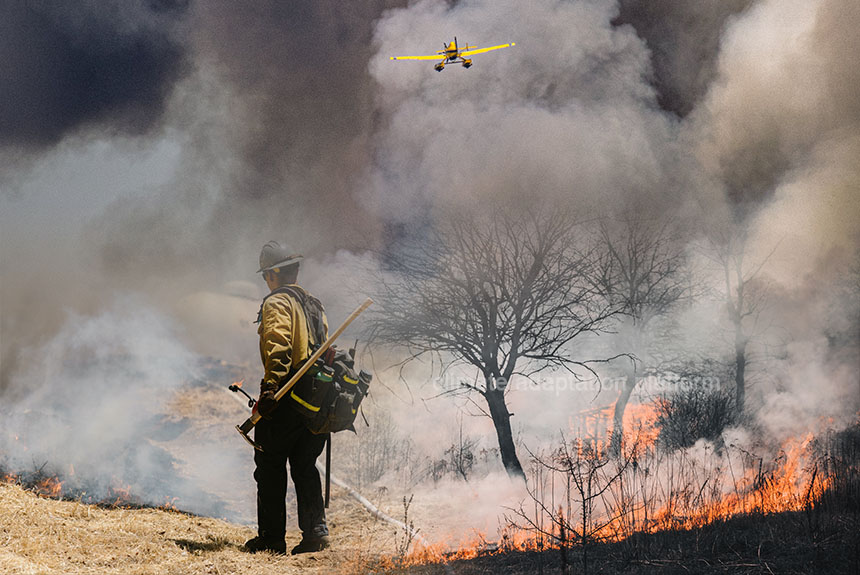Wildfires in various parts of the world – in Canada, Greece, California, Hawaii, Italy, Australia, and European and Mediterranean countries, have occupied the headlines. Are extreme weather events like wildfires getting more frequent, or does it just seem that way because our access to information has improved so much?
The study, “Global Trends of Forest Loss Due to Fire From 2001 to 2019”, published in Frontiers on 15 March 2022, finds that fire season severity and length are projected to increase globally by the end of the century, most notably in the northern high latitudes. Researchers created the first global 30-m resolution satellite-based map of annual forest loss due to fire.
Using the data from the study, the World Resources Institute calculates that forest fires result in 3 million more hectares of tree cover loss per year compared to 2001. This area accounts for more than one-quarter of all tree cover loss in over two decades.
After assessing all the global forests, the researchers of the study found that the proportion of fire-related forest loss is highest in boreal forests (69%-73%) in Eurasia and North America, followed by subtropical (19%-22%) and temperate (17%-21%) in Australia and Oceania, and tropical (6%-9%) and rain forests (7%-9%).
The article from the World Resources Institute, “The Latest Data Confirms: Forest Fires Are Getting Worse”, points to climate change as a driver for increasing fire activity and that extreme heat waves have become five times more likely today than 150 years ago. Adding that the warming planet is creating a fire-climate feedback loop: as carbon emissions increase, it is driving hotter and drier conditions. These conditions make the forest more prone to fires. As large areas burn and fires get more, and fire seasons get longer and fires more frequent and intense, it releases carbon emissions into the atmosphere, which adds to the planet’s warming, hence the feedback loop.
Based on the latest data map from the Global Forest Watch, tree cover loss is more significant in boreal forests. Up to 70% of all fire-related cover losses in the past 20 years. Although fire is a natural part of how boreal forest works, the report notes that fire-related cover loss has increased by (110,000 hectares) by 3% per year in the last two decades. The fact that northern high-latitude regions are warming faster than the rest of the plane contributes to the increasing fire activity in the area.
In Canada, between August 2022 and August 2023, there have been unusually high satellite-based fire alerts compared to years from 2001; a worrying trend because boreal forests store up to 40% of all global terrestrial carbon, and most are stored underground. Forest fires and increasing temperatures could accelerate the melting of permafrost and send vast amounts of GHG into the atmosphere, further fuelling the fire-climate feedback loop.
In the tropics, fire-related tree cover loss has increased by about 36,000 hectares per year by around 5%. It represents approximately 15% of the global rise in fire-related tree cover loss between 2001 and 2022.
Deforestation and shifting agriculture make forests less resilient and more susceptible to fires, leading to higher temperatures and drying, creating additional fuels that make fires spread more rapidly and intense. Both forest fires from boreal and tropical forests can cause higher carbon emissions and could approach a tipping point for turning them into a net carbon source instead of carbon sinks.
In addition to climate change and land use changes, the El Niño phenomenon that comes every two to seven years can also worsen wildfires in the tropics. During the 2015-2016 El Niño season, for example, tree cover loss due to fires increased 10-fold in the tropical rainforests of Southeast Asia and Latin America.
Although fire activities in these forest types are lower historically than in boreal and tropical forests, they accounted for 16% of all fire-related tree cover loss between 2001 and 2022. Data also shows that fires are also increasing in these forests. Although temperate and subtropical forests store less carbon because many are managed forests, fires still pose a significant risk to people and nature.
Reducing forest fires
There is no silver bullet to reducing forest fires. The solution consists of the combination or all of these factors – forest management, reducing GHG emissions, which can create a fire-climate feedback loop, transformation across systems, human activities such as deforestation and forest degradation to be reduced significantly, and limiting burning near forests, particularly during drought conditions.
Learn more about the increasing number of forest fires by clicking the source’s links below.
Sources:
MacCarthy, J., Richter, J., Tyukavina, S., Weisse, M. & Harris, N. (2023, 29 August). World Resources Institute Retrieved from https://www.wri.org/insights/global-trends-forest-fires?utm_campaign=wridigest&utm_source=wridigest-2023-10-18&utm_medium=email
Tyukavina, A., Potapov, P., Hansen, M., Pickens, A., Stehman, S., Turubanova, S., Parker, D., Zalles, V., Lima, A., Kommareddy, I., Song, X., Wang, L., & Harris, N. (2022, March 15). Frontiers. Retrieved from https://www.frontiersin.org/articles/10.3389/frsen.2022.825190/full
The EU 2022 wildfire season was the second worst on record. (2023, May 2). Retrieved from https://joint-research-centre.ec.europa.eu/jrc-news-and-updates/eu-2022-wildfire-season-was-second-worst-record-2023-05-02_en
Tyukavina, A., Potapov, P., Hansen, M. C., Pickens, A. H., Stehman, S. V., Turubanova, S., … & Harris, N. (2022). Global trends of forest loss due to fire from 2001 to 2019. Frontiers in Remote Sensing, 3, 825190.
MacCarthy, J., Richter, J., Tyukavina, S., Weisse, M., & Harris, N. (2023). The latest data confirms: Forest fires are getting worse. World Resources Institute. Available online: https://www. wri. org/insights/global-trends-forest-fires (accessed on 29 August 2023).



Leave a Reply